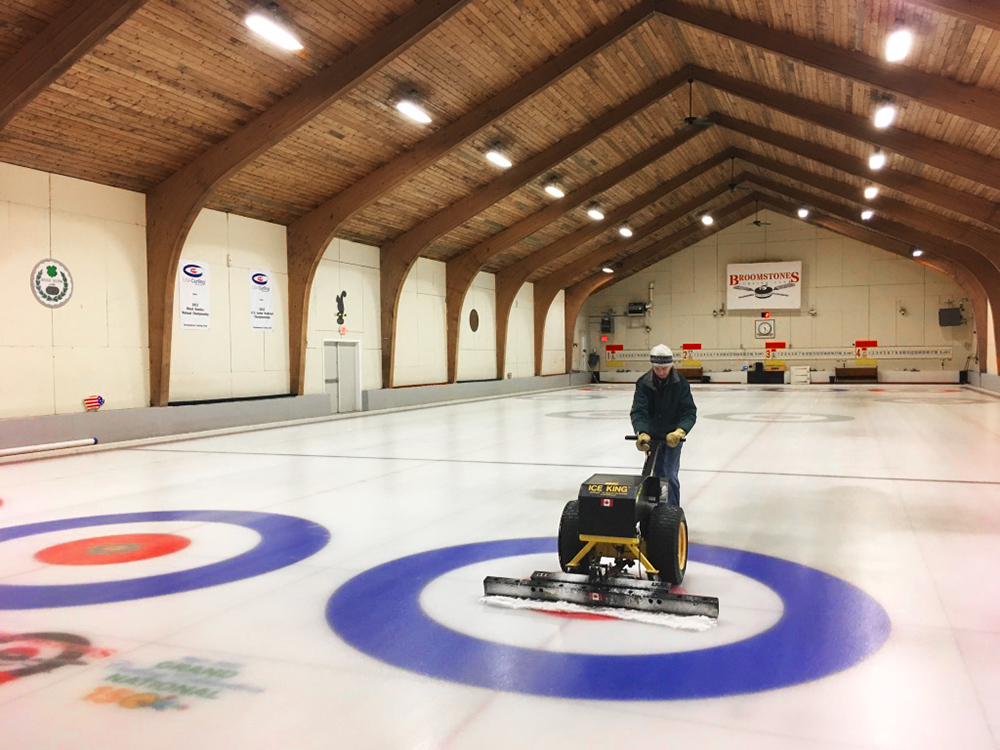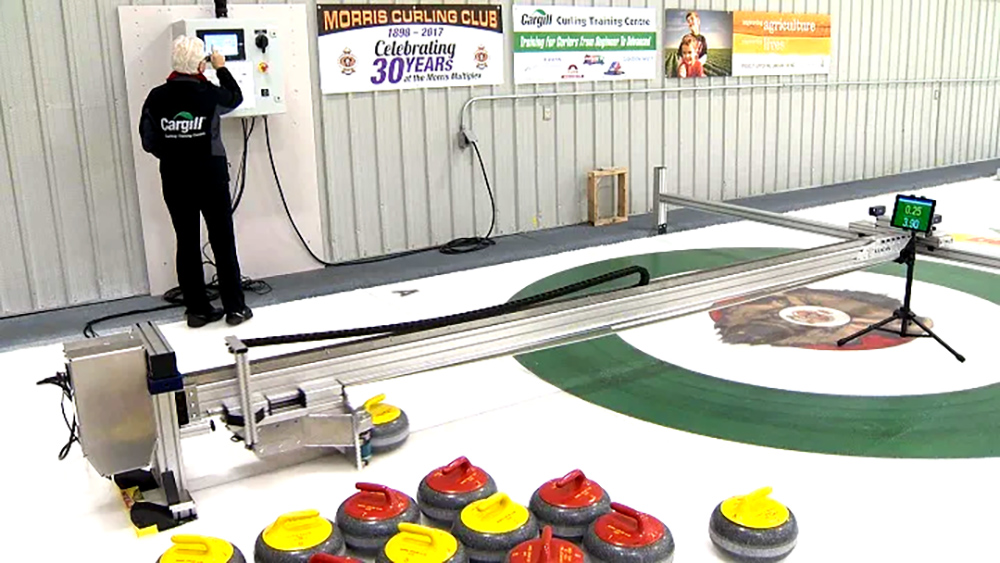We’ve had a lot going on related to ice lately! It is that time of year…
A few months ago, we posted an article about the sport of curling, which is fascinating from a surface roughness perspective.
This month we had a chance to talk to Russell Frank, who is leading up the Curling Ice Quality Improvement Project. Frank has the unique vantage point of being both an ice technician and a curler. He has a strong interest in process improvement, which has led him to believe that research is needed to understand, and standardize, the many variables that go into making excellent curling ice.
Why is curling in a surface roughness blog?
We’re fascinated by the parallels between ice preparation and precision machining. An ice technician manufactures a precision surface by “pebbling” it with a spray of water, then “nipping” the peaks with a blade—much as an engine manufacturer “plateaus” a cylinder wall. Making a quality surface requires control over dozens of variables, and slight changes in any of them can dramatically change the functionality of the ice. Add to that the obvious parallel between the “macro” texture of the ice and the “micro” texture of a machined surface, and we have a nearly perfect analogy!
From an ice maker’s perspective
Ice technicians aim to make consistent, predictable surfaces. Much like machinists, Frank says ice technicians learn their craft over many years. Within a club, skills and techniques are passed from senior to junior technicians, so the ice at a particular club may remain fairly consistent year to year. Technicians also often attend certification courses to develop a foundation and learn the current state of the art.
Nevertheless, aspects of preparation at any club may reflect a mix of handed-down information as well as best practices, and as such, the ice often varies between clubs. Frank hopes that more consistency can be realized by first developing best practices from controlled studies, then building out classes from that data.

Russell Frank preparing the ice in 2015. Image courtesy Russell Frank.
From a player’s perspective
Just as racing teams adjust their cars to match track conditions, curlers adapt to variability in the ice between clubs and throughout a tournament. Leading curlers learn the tendencies of the ice at various facilities, as well as that of certain ice technicians. They will keep records of their stones’ performance at the locations where they play, and they will use the knowledge of those characteristics to help them adapt quickly to the ice conditions at an event.
The players’ decisions and adjustments, however, are often based more on experience and “feel” than on science. Frank hopes that research-based data will help ice technicians to eliminate the need for many of those adjustments by improving consistency.
From a process improvement perspective
According to Frank, much of the science surrounding curling ice is 20 years old. Recent research has primarily focusing on why stones curl, and how brushes affect the travel of the curling stones. Frank sees research in ice preparation as equally important, if not more so. He believes the profession needs to develop a more complete understanding of the ice surface—a macro version of the micro-texture measurements we achieve with optical profiling and similar technologies.

Controlling variables: the world’s first rock throwing machine provides consistent throws at the Morris Curling Club in Manitoba, Canada (courtesy Global News)
Much of the knowledge of micro-texture analysis can also inform this effort. In a similar example, researchers have already adapted surface texture measurement techniques to monitor ice and snow on roads and runways. The primary challenge currently is in developing measurement equipment and techniques to sufficiently map the curling sheet. Once a map can be created, then the techniques of micro-texture analysis (filtering, parameters, etc.) will no doubt prove useful to understanding the ice texture.
The process of bringing together industry experts, research institutes, and end users is also very similar to the development of micro-texture analysis some decades ago. Frank is hopeful that all of these voices can be brought together to solve the challenges, and to raise some of the “art” of making and maintaining curling ice to a “science.”
